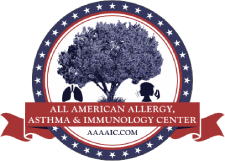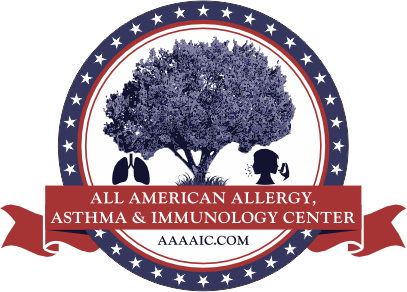Urticaria
Background – Up to 2% of the general population will experience hives at some point in their life. Hives are not contagious, however, their presence can cause frustration and aggravation for patients due to the unsightliness of the condition, unpredictability and its associated itching. They manifest as itchy, raised, red or pale lesions on any part of the body. Size varies from pinpoint to larger than an adult hand. They can last a few minutes up to several days at a time. They can appear anywhere on the body, including the lips, tongue, throat, and ears, and often resolve on their own. They can also involve swelling. There are many factors that can cause hives. Some of the more common causes are foods, aeroallergens, insect stings/bites, drugs, stress, and chemical exposures. Less common caused are environmental/physical exposures (sun, water, cold, pressure etc), hormones, connective tissue diseases (i.e lupus), malignancies, endocrine disorders (i.e thyroid syndromes, diabetes), mast cell disorders, and infections.
How it works/Pathophysiology – Inflammatory cells (i.e mast cells and basophils) that line tissues such as skin release histamine, which triggers movement of blood plasma out of tiny blood vessels to the skin surface, resulting in both hives (urticaria) and, occasionally swelling. The skin also becomes red and very itchy. This inflammatory cascade can be triggered by any of the beforementioned (see background).
Symptoms – Raised, Red/Pale, Itchy welp like lesions that vary in size
Self-Treatment Tips:
- Avoid known triggers
- Otc Antihistamines
- Otc hydrocortisone cream
- Otc Sarna
- Wear loose-fitting, light clothing
- Avoid scented soaps and laundry detergents
- Cold wet compress applications
- Otc Calamine lotion
- Vitamin D
- Avoid direct sunlight
- Wearing waterproof gloves when handling substances that you are sensitive to
- Avoid NSAIDS
- Limit alcohol intake
Diagnostic Testing – Prick or Intradermal Skin testing consist of pricking or intradermally introducing aeroallergens, foods and or drugs that are suspected triggers. 20 minutes later, the wheel and flare of the site is measured, and the allergy provider will discuss the results and overall interpretation.
In -Vitro allergy testing consists of whole blood draw at a local lab for which the whole blood is analyzed for the IgE antibody to aeroallergens, foods, and or medications. About 1.5 wks later, the allergy provider will discuss the results and overall interpretation.
Patch Skin Testing consists of directly exposing a patient’s skin to a suspected trigger. Very small chambers containing different potential allergens are taped to a patient’s back for several days to see what skin reactions occur. Chambers may contain a variety of substances, including metals, clothing materials, chemicals, rubbers, fragrances, preservatives, and sometimes medications. Localized patches of inflammation appear within 2 to 4 days, or even up to a week, if a skin allergy is present. Patch testing is primarily used to look for delayed skin reactions, and to determine if a person’s skin allergy symptoms are due to contact with something in their home or work environment.
In-Vitro Blood testing consists of whole blood draw at a local lab for which the whole blood is analyzed/screened via various studies for for malignancies, mast cell disorders, metabolic derangements (i.e liver, kidney issues), infections, endocrinopathies (i.e diabetes, thyroid disorders), and connective tissue disorders (i.e rheumatoid arthritis, lupus).
Physical Testing consists of attempting to reproduce the hives by exposing pt to the suspected trigger such as heat, exercise, pressure and/or cold (i.e ice cube test).
Therapies:
Aeroallergy Immunotherapy (Allergy shots) – Allergy shots or AIT are subcutaneous injections of a small amounts of the specific aeroallergen(s) that you are allergic to. It is just enough to stimulate your immune system in order to desensitize your body over time, which causes your allergy sxs to diminish over time. It is up to 85% effective. Patients who are part of the effective group will first notice improvement within the first 4-8 months of therapy. It will continue to improve. Studies show that most patients will need to be on the maintenance phase of AIT for at least (3-5) years in order to obtain long lasting benefit. AIT is conducted in (2) phases. The buildup phase for routine AIT will require a shot 2 times a week for the first (8) weeks in most cases. The maintenance phase requires an AIT shot once every (2-4) weeks thereafter in most cases. The overall rate of adverse reactions for AIT in most large validated studies is <1%. For patient’s with lifestyle and schedule conflicts we also offer Cluster and Rush buildups, which enables faster time to the maintenance phase in 4 wks or less. Patients must be observed in the clinic for at least (30) minutes after each shot. Allergy shots are administered on a “walk in” basis during normal business hours, so there is no need for an appointment.
Sublingual Aeroallergen Immunotherapy (Allergy tabs) – Treatment typically takes 3-5 years but can vary based on allergy type and patient adherence. The tablets are small amounts of the specific aeroallergen that you are allergic to. Currently, there are tablets FDA approved just for dust mites, grass (Timothy and 5-grasses), and ragweed. It is just enough to stimulate your immune system in order to desensitize your body over time, which causes your allergy sxs to diminish over time. It is around 70-75% effective. The side effect profile is less than AIT. Pt’s will take the first dose in the clinic and at home thereafter. The tablets for grass are started (12) wks before summer. The tablets are usually taken daily for at least (3) years to obtain a long-lasting effect.
Sublingual Aeroallergen Immunotherapy (Allergy drops) – Allergy drops like allergy shots work by gradually helping your body build tolerance to the substance(s) that cause your allergies. The difference is that the antigen is placed under your tongue in a pain-free, liquid drop customized to your aero allergy profile. It is also nearly as effective as the shots and are safer. This form of immunotherapy is self-administered by patients. It is convenient for patients who don’t like needles, have time to come into the allergy clinic for a shot and or like to manage their own care in the convenience of their home or while traveling. Allergy drops are also very affordable. Please see the pricing tab for more information.
Xolair (Omalizumab) – Xolair is a humanized monoclonal antibody that is administered by subcutaneous injection every 4 wks. It works by preventing the “allergy” inflammatory by binding free IgE antibodies (this is the antibody that triggers allergies) and by blocking certain receptors on inflammatory cells (i.e mast cells, basophils). Xolair is very effective and has a relatively small adverse effect profile. It essentially reduces or eliminates the need to take daily medications for hives such as antihistamines or steroids.
Antihistamines – Antihistamines work by blocking histamine receptors on tissues thus eliminating and or reducing the influence of histamine on the body. Histamine is the chief cause of urtication or hives. Anthistamines come in various strengths, dosages, and types. They can be an excellent preventative and temporizing agent for hives. Your allergy provider can work with you to find the most effective and suitable regimen.
Antileukotriene Agents – These agents act by disrupting the activation of leukotriene, which is one of the inflammatory mediators that are released during hives/urticaria. They can be effective in combination with antihistamines and/or steroids.
Corticosteroids – Corticosteroids or synthetic steroids agents that turn down the overall immune repose despite the trigger by preventing the conversion of phospholipids into arachidonic acid. It is often used for acute hives that are moderate-severe. It is administered for a few days up to several weeks. Due to its side effect profile, longer courses are tapered down overtime.
Topical Corticosteroids – Topical steroids work like the oral corticosteroids discussed above, but just locally wherever it is applied. They vary in potency and types.
Topical Calcineurin Inhibitors – Topical calcineurin inhibitors act by disrupting the inflammatory cascade involved in urticaria locally.
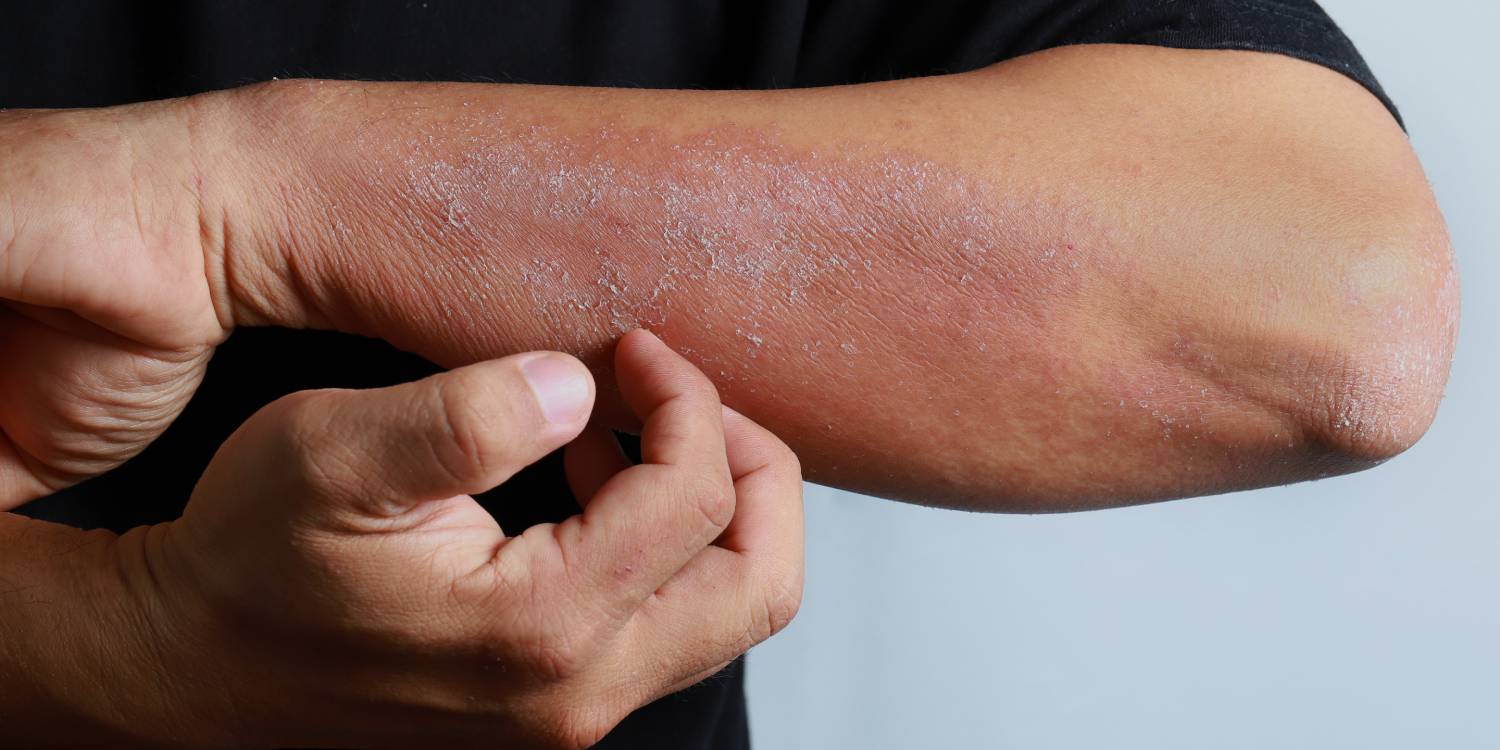
Eczema:
Background – Eczema or atopic dermatitis is a genetically transmitted or acquired, chronic inflammatory skin disease that affects up to 20% of children and 3% of Adults in the U.S. The skin is usually dry, itchy, scaly, and can become raw or weepy when it is scratched, and skin thickening may develop in areas of chronic involvement. It commonly begins in the first year of life. The rash frequently appears in skin crease areas such as the elbows, knees, and wrists. It often affects the ankles, hands, feet, and face as well. Children with eczema often have other allergic issues. Uncontrolled eczema can lead to skin infections and or plaques. Approximately 75 percent of children with eczema go on to develop other allergy syndromes such as allergic rhinitis (hay fever), food allergies and/or asthma.
How it works/Pathophysiology – Patients with eczema have a defective skin barrier that results in a chronic self-perpetuating inflammatory condition that manifests as dry, scaly, itchy, and discolored skin. It can be worsened and or triggered by aeroallergens, foods and environmental exposures.
Symptoms – Discolored, flat or raised, dry, scaly patches of skin. The skin can also be thickened and or weep when scratched.
Self-Treatment Tips:
- Avoid known triggers
- Otc Antihistamines
- Otc hydrocortisone cream
- Otc Sarna
- Wear loose-fitting, light clothing
- Avoid scented soaps and laundry detergents
- Use mild soaps and detergents
- Use moisturizer several times a day and after bathing
- Avoiding toiletry agents that contain food products
- Avoid hot water when bathing
- Use water proof gloves when handling foods, chemicals and liquids
- Vitamin D
- Avoid direct sunlight
- Use hypoallergenic hand soap if hand involvement
Diagnostic Testing – Prick or Intradermal Skin testing consist of pricking or intradermally introducing aeroallergens, foods and or drugs that are suspected triggers. 20 minutes later, the wheel and flare of the site is measured, and the allergy provider will discuss the results and overall interpretation.
In-Vitro allergy testing consists of whole blood draw at a local lab for which the whole blood is analyzed for the IgE antibody to aeroallergens, foods, and or medications. About 1.5 wks later, the allergy provider will discuss the results and overall interpretation.
Patch Skin Testing consists of directly exposing a patient’s skin to a suspected trigger. Very small chambers containing different potential allergens are taped to a patient’s back for several days to see what skin reactions occur. Chambers may contain a variety of substances, including metals, clothing materials, chemicals, rubbers, fragrances, preservatives, and sometimes medications. Localized patches of inflammation appear within 2 to 4 days, or even up to a week, if a skin allergy is present. Patch testing is primarily used to look for delayed skin reactions, and to determine if a person’s skin allergy symptoms are due to contact with something in their home or work environment.
Therapies:
Aeroallergy Immunotherapy (Allergy shots) – Allergy shots or AIT are subcutaneous injections of a small amounts of the specific aeroallergen(s) that you are allergic to. It is just enough to stimulate your immune system in order to desensitize your body over time, which causes your allergy sxs to diminish over time. It is up to 85% effective. Patients who are part of the effective group will first notice improvement within the first 4-8 months of therapy. It will continue to improve. Studies show that most patients will need to be on the maintenance phase of AIT for at least (3-5) years in order to obtain long lasting benefit. AIT is conducted in (2) phases. The buildup phase for routine AIT will require a shot 2 times a week for the first (8) weeks in most cases. The maintenance phase requires an AIT shot once every (2-4) weeks thereafter in most cases. The overall rate of adverse reactions for AIT in most large, validated studies is <1%. For patients with lifestyle and schedule conflicts we also offer Cluster and Rush buildups, which enables faster time to the maintenance phase in 4 wks or less. Patients must be observed in the clinic for at least (30) minutes after each shot. Allergy shots are administered on a “walk in” basis during normal business hours, so there is no need for an appointment.
Sublingual Aeroallergen Immunotherapy (Allergy tabs) – Treatment typically takes 3-5 years but can vary based on allergy type and patient adherence. The tablets are small amounts of the specific aeroallergen that you are allergic to. Currently, there are tablets FDA approved just for dust mites, grass (Timothy and 5-grasses), and ragweed. It is just enough to stimulate your immune system in order to desensitize your body over time, which causes your allergy sxs to diminish over time. It is around 70-75% effective. The side effect profile is less than AIT. Pt’s will take the first dose in the clinic and at home thereafter. The tablets for grass are started (12) wks before summer. The tablets are usually taken daily for at least (3) years to obtain a long-lasting effect.
Sublingual Aeroallergen Immunotherapy (Allergy drops) – Allergy drops like allergy shots work by gradually helping your body build tolerance to the substance(s) that cause your allergies. The difference is that the antigen is placed under your tongue in a pain-free, liquid drop customized to your aero allergy profile. It is also nearly as effective as the shots and are safer. This form of immunotherapy is self-administered by patients. It is convenient for patients who don’t like needles, have time to come into the allergy clinic for a shot and or like to manage their own care in the convenience of their home or while traveling. Allergy drops are also very affordable. Please see the pricing tab for more information.
Dupixent (Dupilumab) – Dupixent is a human monoclonal antibody that is administered by subcutaneous injection every 2 or 4 wks. It works to prevent skin inflammation by blocking certain signaling receptors necessary to ignite type 2 inflammation. It is effective and has a relatively small adverse effect profile. It essentially reduces or eliminates the need to take daily medications for eczema.
Adbry (tralokinumab-ldrm) – Adbry is a human monoclonal antibody that is administered by subcutaneous injection every other week. It works to prevent skin inflammation by blocking a signaling receptor necessary to ignite type 2 inflammation. It is effective and has a relatively small adverse effect profile. It essentially reduces or eliminates the need to take daily medications for eczema.
Cibinqo (abrocitinib) – Cibinqo is an oral janus kinase 1 inhibitor that is administrated orally daily. It disrupts the normal response of the skin to certain inflammatory signals. It is used for adults with refractory moderate to severe atopic dermatitis whose disease is not adequately controlled with other systemic drug products, including biologics, or when use of those therapies is inadvisable.
Rinvoq (upadacitinib) – Rinvoq is an oral janus kinase 1 inhibitor that is administered orally daily. It disrupts the normal response of the skin to certain inflammatory signals. It is approved by the FDA for adults and adolescents aged 12+ years with moderate to severe AD whose disease is not adequately controlled with other system drug products, including biologics, or when use of those therapies is inadvisable.
Opzelura (ruxolitinib 1.5%) – Opzelura is a another janus kinase 1 inhibitor, but it is administered topically in a cream form. It disrupts the normal response of the skin to certain inflammatory signals. It is approved by the FDA for the short-term and non-continuous treatment of mild to moderate atopic dermatitis in non-immunocompromised (patients without weakened immune systems) adult and pediatric patients 12 years of age and older who disease is not adequately controlled with topical prescription therapies or when those therapies are not advisable.
Eucrisa (Crisaborole) – Eucrisa is a phosphodiesterase-4 inhibitor that is administered topically in a cream form. It acts by blocking the release of signals that play a large role in skin inflammation. It is FDA approved for adults and children with mild to moderate atopic dermatitis ages 3 months and up.
Antihistamines – Antihistamines work by blocking histamine receptors on tissues thus eliminating and or reducing the influence of histamine on the body. Histamine is the chief cause of itching, which is a major symptom associated with eczema. Most eczema patients experience the “scratch-itch cycle” which worsens their condition since the scratching contributes to the erosion of their skin barrier. Antihistamines also improve quality of life especially in kids who scratch in their sleep. Your allergy provider can work with you to find the most effective and suitable regimen.
Antileukotriene Agents – These agents act by disrupting the activation of leukotriene, which is one of the inflammatory mediators that are released during in skin inflammation.
Corticosteroids – Corticosteroids or synthetic steroids agents that turn down the overall immune repose despite the trigger by preventing the conversion of phospholipids into arachidonic acid. It is often used for eczema flares. It is administered for a few days up to several weeks. Due to its side effect profile, longer courses are tapered down overtime.
Topical Corticosteroids – Topical steroids work like the oral corticosteroids discussed above, but just locally wherever it is applied. They vary in potency and types.
Topical Calcineurin Inhibitors – Topical calcineurin inhibitors act by disrupting the inflammatory cascade involved in urticaria locally.
Antibiotics – Topical and oral antibiotics are used to treat bacterial skin infections. These are usually caused by excessive scratching, which erodes the skin barrier.
Moisturizing and Bathing Treatments – These therapies improve eczema control by increasing the overall skin moisture by using agents such as wet wraps, humectants, occlusive agents, moisture preserving soaps and emollients.
Avoiding Triggers – Through testing discussed above, identification of triggers or agent(s) that worsen eczema can improve overall skin inflammation.
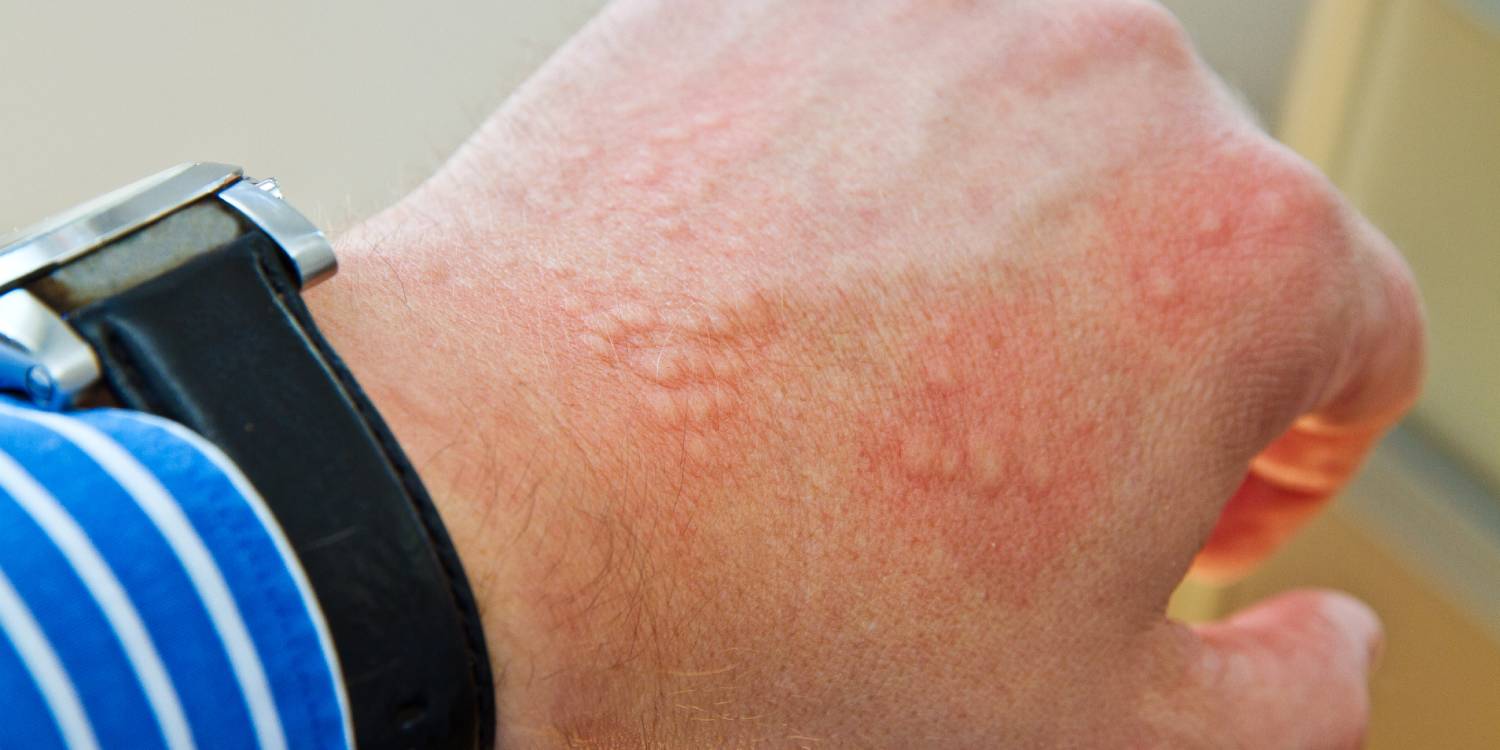
Contact Dermatitis:
Background – Contact dermatitis is inflammation of the skin that is caused by contact with a trigger. It can be a plant, medications, bath product, fabric, jewelry, fragrances, chemical, food, or metal. Direct contact with the trigger produces red, bumpy, scaly, itchy, or swollen skin at the point of contact that can last for several minutes up to days at a time. Up to 2% of the general population will experience hives at some point in their life. It is often difficult to figure out the exam cause, but testing can reveal the actual cause and enable patients to safely avoid in the future.
How it works/Pathophysiology – Direct contact with triggers cause an localized inflammatory cascade that manifests as red, bumpy, scaly, itchy, or swollen skin. This inflammatory cascade can be triggered by any of the beforementioned (see background).
Symptoms:
- Raised, Red/Pale, Itchy welp like lesions that vary in size
- Self-Treatment Tips – Avoid known triggers
- Otc Antihistamines
- Otc hydrocortisone cream
- Otc Sarna
- Cold wet compress applications
- Wearing waterproof gloves when handling substances/items that you are sensitive to
- Otc Calamine lotion
- Avoid direct sunlight on the flared area
Diagnostic Testing – Patch Skin Testing consists of directly exposing a patient’s skin to a suspected trigger. Very small chambers containing different potential allergens are taped to a patient’s back for several days to see what skin reactions occur. Chambers may contain a variety of substances, including metals, clothing materials, chemicals, rubbers, fragrances, preservatives, and sometimes medications. Localized patches of inflammation appear within 2 to 4 days, or even up to a week, if a skin allergy is present. Patch testing is primarily used to look for delayed skin reactions, and to determine if a person’s skin allergy symptoms are due to contact with something in their home or work environment. Patients are provided a comprehensive list of items/products that contain the items that they test positive for.
Therapies:
The mainstay of therapy for contact dermatitis is avoidance of the identifiable trigger. Patients are provided a comprehensive list of items/products that contain the items that they test positive for during the patch testing. Active flares can be treated with antihistamines, oral/topical steroids, topical calcineurin inhibitors, and skin care regimens.
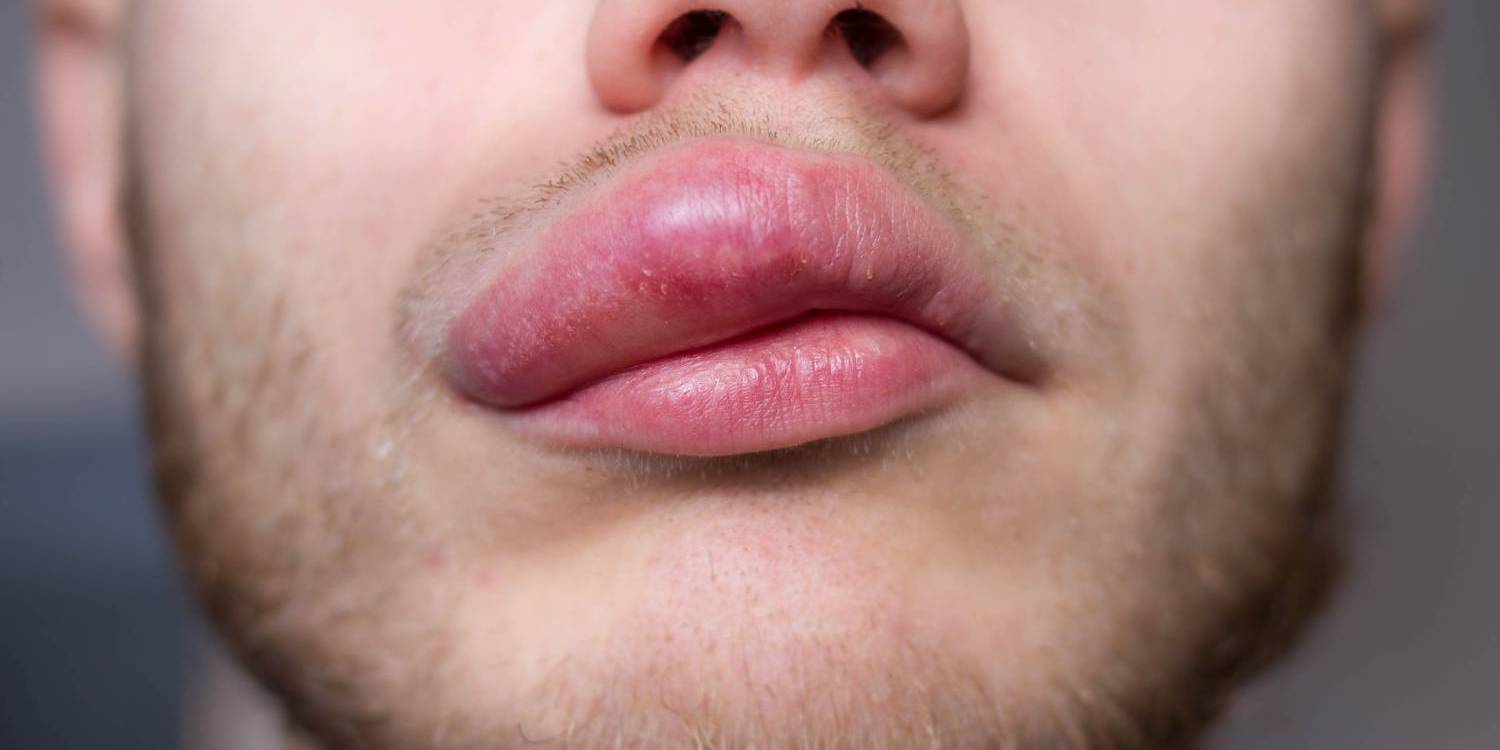
Angioedema:
Background – Angioedema is swelling that occurs beneath the skin that is caused by inflammatory mediated shifts of fluid. It can happen in many areas of the body to include face, arms, legs, feet and hands. The swelling in angioedema feels as if large, firm, and thick welts have formed under the skin. This swelling can also cause redness, pain at the site, or even a small amount of heat in the affected areas. When angioedema occurs in the intestine, it can cause stomach pain. When it occurs in the throat or other areas associated with respiration, angioedema can affect a patient’s breathing, making it difficult to get enough oxygen. The swelling in angioedema feels as if large, firm, and thick welts have formed under the skin. Triggers include food, aeroallergens, insect stings, vaccines, drugs (ACE inhibitors, ARBs), hereditary genetic defect, and unknown causes.
How it works/Pathophysiology – Exposure to the trigger results in the release of excess fluid from the blood into adjacent tissues. This then triggers the swelling associated with the condition. The exception to this is hereditary angioedema, which is caused by the lack of C1 esterase inhibitor in the body.
Symptoms – Swelling, with or without itching and discomfort
Self-Treatment Tips:
- Avoid known triggers
- Otc Antihistamines
- Otc hydrocortisone cream
- Otc Sarna
- Cold wet compress applications
- Otc Calamine lotion
Diagnostic Testing – Prick or Intradermal Skin testing consist of pricking or intradermally introducing aeroallergens, foods and or drugs that are suspected triggers. 20 minutes later, the wheel and flare of the site is measured, and the allergy provider will discuss the results and overall interpretation.
In -Vitro allergy testing consists of whole blood draw at a local lab for which the whole blood is analyzed for the IgE antibody to aeroallergens, foods, and or medications. About 1.5 wks later, the allergy provider will discuss the results and overall interpretation.
Patch Skin Testing consists of directly exposing a patient’s skin to a suspected trigger. Very small chambers containing different potential allergens are taped to a patient’s back for several days to see what skin reactions occur. Chambers may contain a variety of substances, including metals, clothing materials, chemicals, rubbers, fragrances, preservatives, and sometimes medications. Localized patches of inflammation appear within 2 to 4 days, or even up to a week, if a skin allergy is present. Patch testing is primarily used to look for delayed skin reactions, and to determine if a person’s skin allergy symptoms are due to contact with something in their home or work environment.
In-Vitro Blood testing consists of whole blood draw at a local lab for which the whole blood is analyzed/screened via various studies for for malignancies, hereditary angioedema, mast cell disorders, metabolic derangements (i.e liver, kidney issues), infections, endocrinopathies (i.e diabetes, thyroid disorders), and connective tissue disorders (i.e rheumatoid arthritis, lupus).
Therapies:
Aeroallergy Immunotherapy (Allergy shots) – Allergy shots or AIT are subcutaneous injections of a small amounts of the specific aeroallergen(s) that you are allergic to. It is just enough to stimulate your immune system in order to desensitize your body over time, which causes your allergy sxs to diminish over time. It is up to 85% effective. Patients who are part of the effective group will first notice improvement within the first 4-8 months of therapy. It will continue to improve. Studies show that most patients will need to be on the maintenance phase of AIT for at least (3-5) years in order to obtain long lasting benefit. AIT is conducted in (2) phases. The buildup phase for routine AIT will require a shot 2 times a week for the first (8) weeks in most cases. The maintenance phase requires an AIT shot once every (2-4) weeks thereafter in most cases. The overall rate of adverse reactions for AIT in most large, validated studies is <1%. For patients with lifestyle and schedule conflicts we also offer Cluster and Rush buildups, which enables faster time to the maintenance phase in 4 wks or less. Patients must be observed in the clinic for at least (30) minutes after each shot. Allergy shots are administered on a “walk in” basis during normal business hours, so there is no need for an appointment.
Sublingual Aeroallergen Immunotherapy (Allergy tabs) – Treatment typically takes 3-5 years but can vary based on allergy type and patient adherence. The tablets are small amounts of the specific aeroallergen that you are allergic to. Currently, there are tablets FDA approved just for dust mites, grass (Timothy and 5-grasses), and ragweed. It is just enough to stimulate your immune system in order to desensitize your body over time, which causes your allergy sxs to diminish over time. It is around 70-75% effective. The side effect profile is less than AIT. Pt’s will take the first dose in the clinic and at home thereafter. The tablets for grass are started (12) wks before summer. The tablets are usually taken daily for at least (3) years to obtain a long-lasting effect.
Sublingual Aeroallergen Immunotherapy (Allergy drops) – Allergy drops like allergy shots work by gradually helping your body build tolerance to the substance(s) that cause your allergies. The difference is that the antigen is placed under your tongue in a pain-free, liquid drop customized to your aero allergy profile. It is also nearly as effective as the shots and are safer. This form of immunotherapy is self-administered by patients. It is convenient for patients who don’t like needles, have time to come into the allergy clinic for a shot and or like to manage their own care in the convenience of their home or while traveling. Allergy drops are also very affordable. Please see the pricing tab for more information.
Esterase Inhibitors (Cinryze, Rhucin), Plasma Kallikrein Inhibitors (Kalbitor), or Bradykinin Antagonists (Firazyr) – These medications work to address the C1 deficiency in the body that causes hereditary angioedema. Most of these medications are delivered by subcutaneous injection and are approved by the FDA for self-administration by the patient.
Epinephrine – Patients who experience acute airway closure due to swelling from a reaction to a food, drug, vaccine or insect sting should carry an EPIPEN. This condition is called anaphylaxis. The EPIPEN can temporarily reverse some of the life-threatening symptoms. These patients may also need to carry and self-administer injected epinephrine in case they are exposed to a trigger.
Antihistamines – Antihistamines work by blocking histamine receptors on tissues thus eliminating and or reducing the influence of histamine on the body. Histamine is the chief cause of itching. Your allergy provider can work with you to find the most effective and suitable regimen.
Corticosteroids – Corticosteroids or synthetic steroids agents that turn down the overall immune repose despite the trigger by preventing the conversion of phospholipids into arachidonic acid. It is administered for a few days up to several weeks. Due to its side effect profile, longer courses are tapered down overtime.
Topical Corticosteroids – Topical steroids work like the oral corticosteroids discussed above, but just locally wherever it is applied. They vary in potency and types.
Topical Calcineurin Inhibitors – Topical calcineurin inhibitors act by disrupting the inflammatory cascade involved in urticaria locally.
Avoiding Triggers – Through testing discussed above, identification of triggers or agent(s) that worsen eczema can improve overall skin inflammation.
